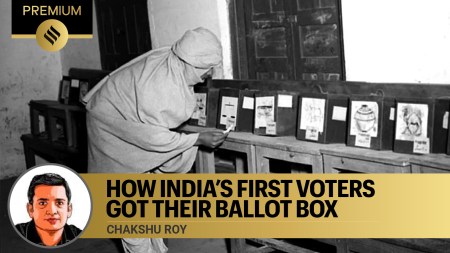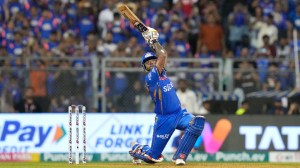- India
- International
Himalayan region, Northeast India likely to experience more flash drought events in near future, flags expert
The findings of the study conducted at the Indian Institute of Technology-Gandhinagar (IITGN) by research scholar Shanti Shwarup Mahto further reveal that over 80 per cent of the country-level flash droughts occurred during the monsoon season.
 The study reveals that flash droughts are increasing globally and will further spike in the future. The total cropland area affected by flash drought has increased during the 1981-2020 period, the study adds.
The study reveals that flash droughts are increasing globally and will further spike in the future. The total cropland area affected by flash drought has increased during the 1981-2020 period, the study adds.The flash drought development rate, which has significantly increased in India in the last four decades, is projected to further increase in near future, according to a study. Northeast India and the Himalayan region will experience more flash drought events in the future, it has been projected.
Over 80 per cent of the country-level flash droughts occurred during the monsoon season and the frequency and development rate increased in the eastern states of Bihar and some parts of Jharkhand, Uttar Pradesh, and Chhatisgarh as well as the North East, the research further underlines. The study was conducted at Indian Institute of Technology Gandhingar (IITGN) by research scholar Shanti Shwarup Mahto, from the discipline of Earth Sciences, under Prof Vimal Mishra from the Department of Civil Engineering.
Mahto recently received his PhD, and is working as a postdoctoral associate at the National University of Singapore. He is also currently a visiting postdoctoral scientist at Cornell University, New York.
The study was already published in the American Meteorological Society’s Journal of Climate in March and the Institute of Physics’ (IOP’s) Environmental Research Letters in August 2020 and March.
The research weighs the impact on rice, maize, and wheat. Mahto points out that the role of irrigation has not been accounted for.

Unlike conventional droughts, a flash drought is characterised by a rapid rate of drought development that persists for a significant duration, usually at least a month. The major flash droughts, studied between 1980-2021, occurred during the summer monsoon season of 1979, 2001, 1958, and 1986. About 10-15 per cent of rice and maize grown area, each year, is affected by flash droughts in India, the study points out.
Globally, as per the findings, flash droughts are increasing, and there will be an uptick in the trend in the future. This also poses the risk of simultaneous occurrence of flash droughts across global croplands. The total cropland area affected by the flash drought has increased during the 1981-2020 period, highlights the research.
“Recently, it has been observed that the intensity of agricultural losses is getting higher in shorter periods. So, through the research, we have tried to find out a comprehensive assessment on the drivers and implications of flash droughts in India and other parts of the world too,” Shanti Shwarup Mahto told The Indian Express.
The frequency of flash droughts is defined as how many times it has happened in a given period, and the development rate is how rapidly the drought is developing from a normal condition to an abnormally dry condition.
Elaborating on the relevance of the research Mahto says, “India is vulnerable to flash droughts due to its large population and agriculture-driven economy; the occurrence, driving mechanism, and consequences of flash droughts are largely unexplored. Therefore, understanding the flash droughts in the observed and projected future climate is essential for adaptation and mitigation. Flash drought affects the global agricultural demand. For instance, maximum rice production is done in the Asian continent with India the largest exporter. So, any impact on rice production in India affects global rice production. Thus, three crops were covered in the study- rice, maize, and wheat.”
“Northeast India and the Himalayan region will experience more flash drought events in the future. However, the western Indian parts have recorded fewer flash droughts as this region has witnessed more rain in recent times, thus higher soil moisture. For the future too, the strongest decline in flash drought frequency is projected in western north India, Indo-Gangetic Plain, and Tamil Nadu. In contrast, a smaller decrease in flash drought frequency is projected in the eastern and central peninsular regions,” Mahto adds.
May 07: Latest News
- 01
- 02
- 03
- 04
- 05





































